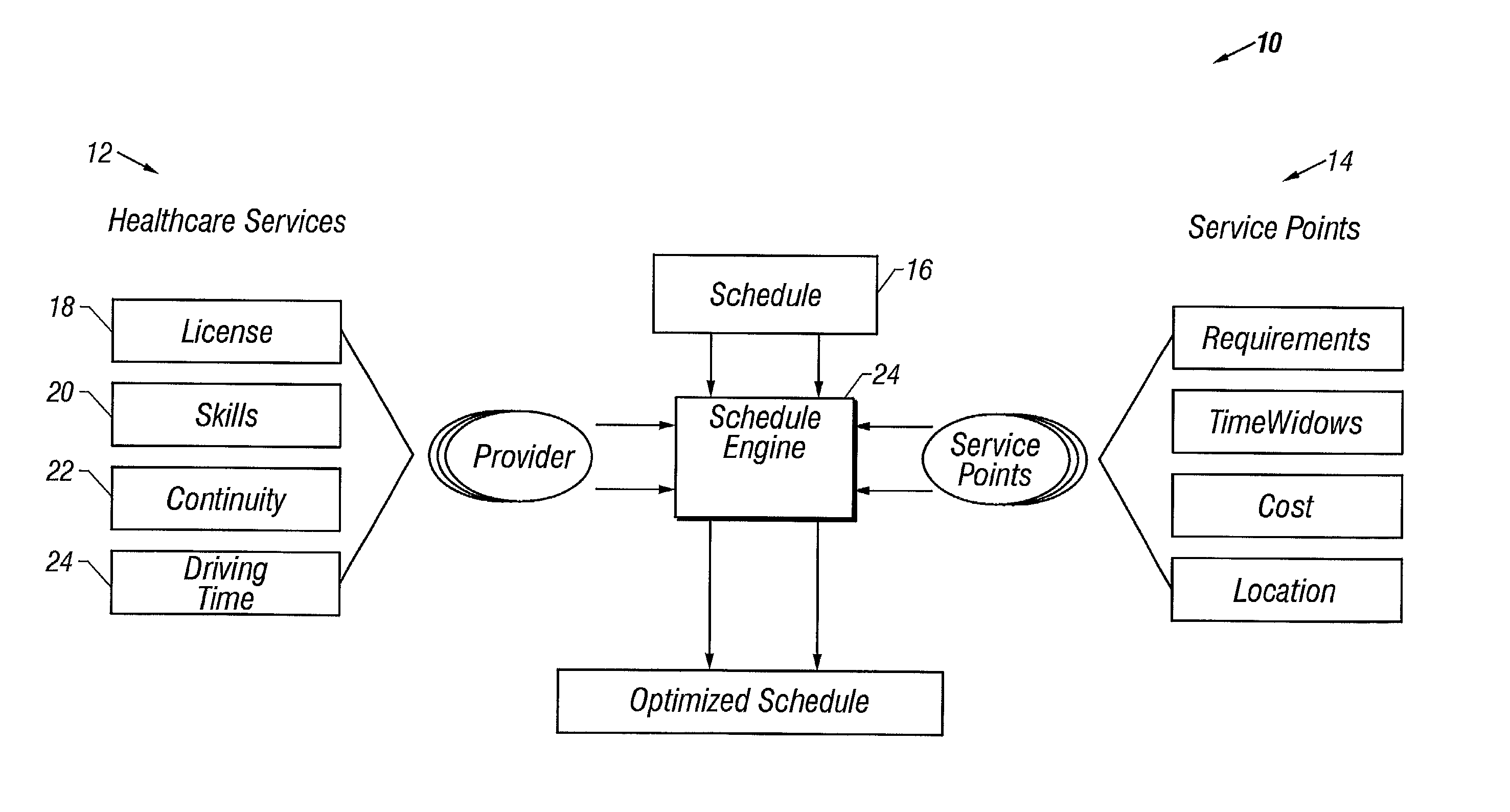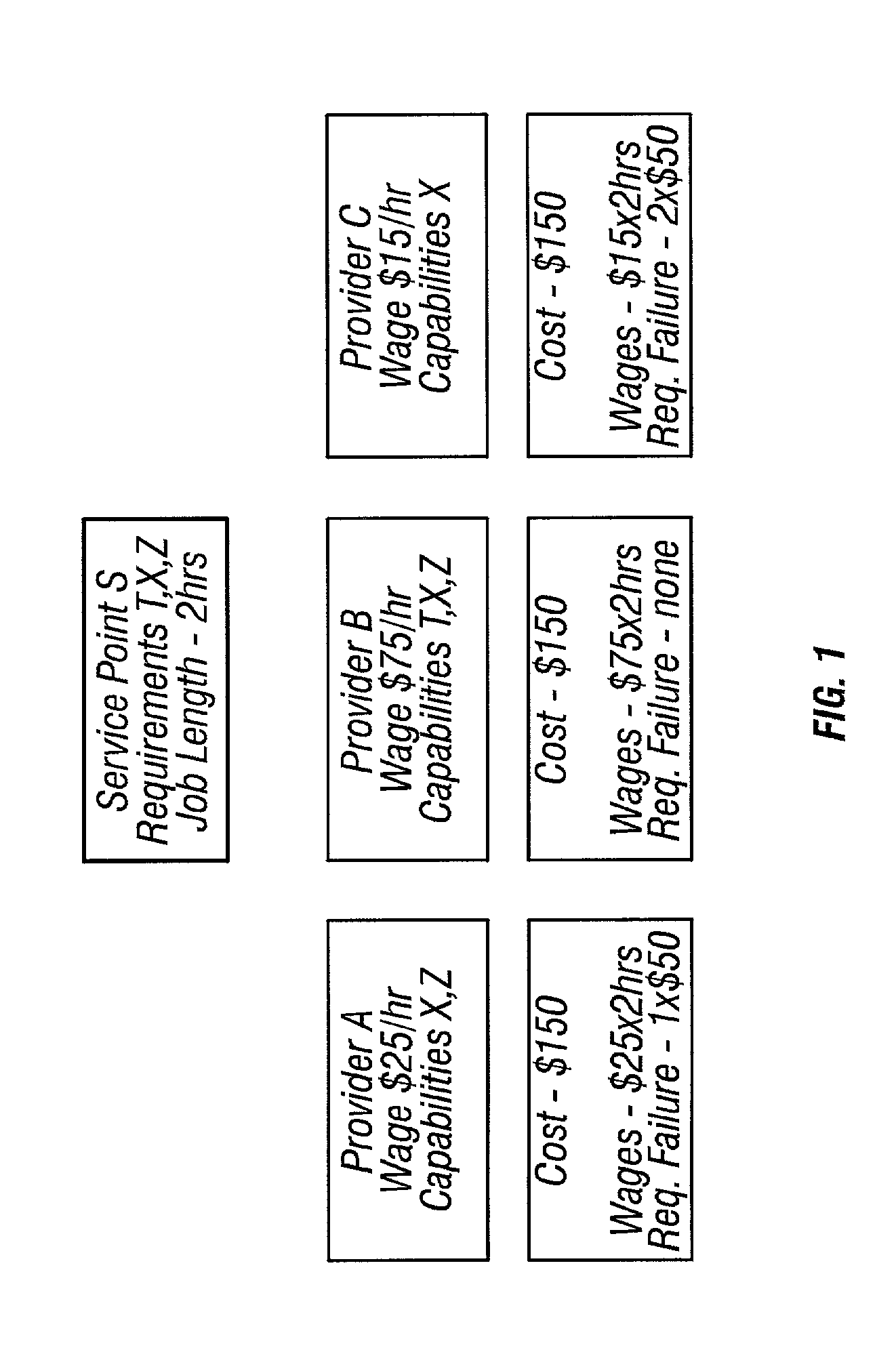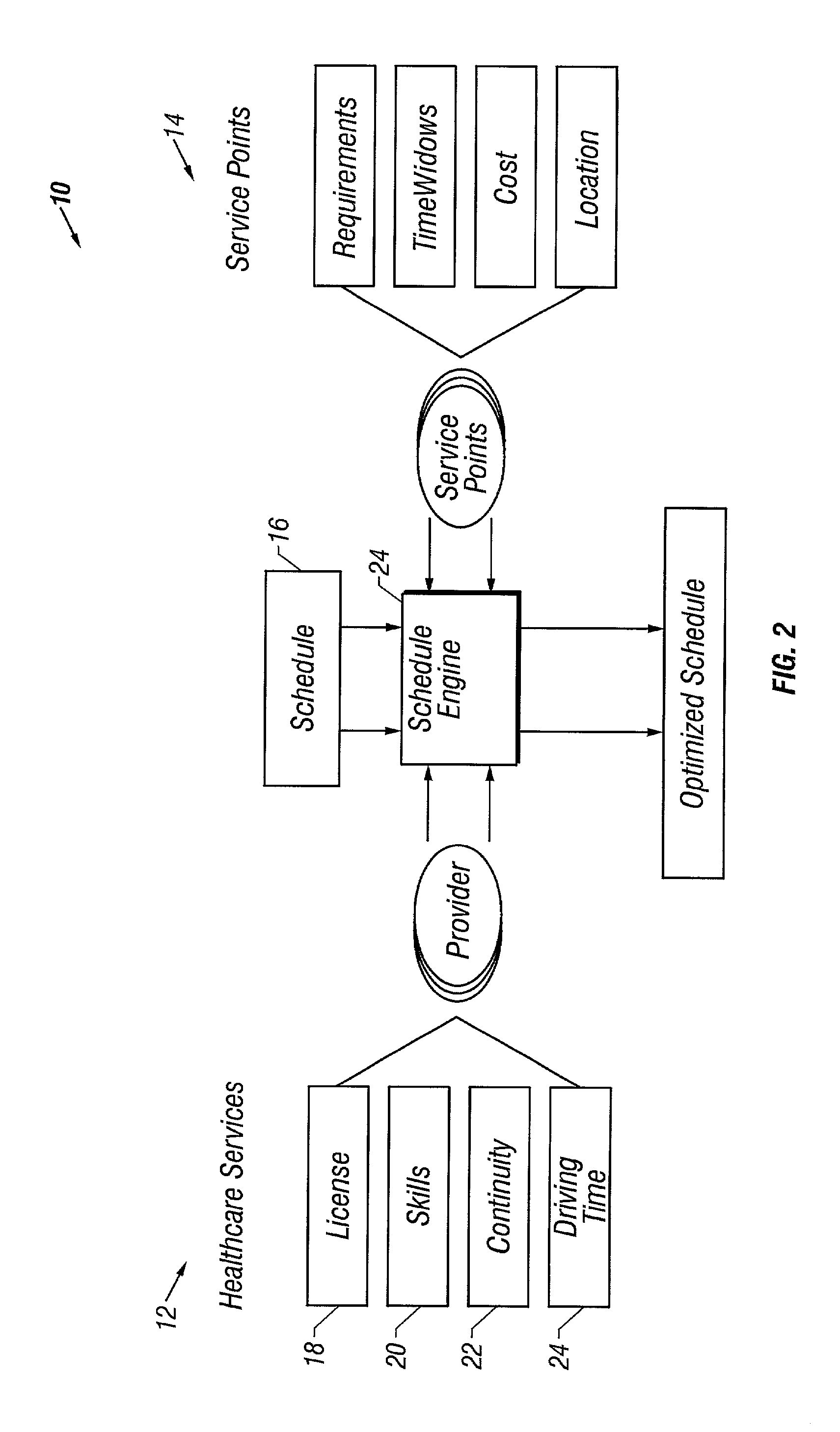Multi-layer engine using generic controls for optimal routing scheme
a multi-layer scheduling and generic control technology, applied in forecasting, instruments, data processing applications, etc., can solve the problems of complex complex scheduling and logistic problems, not extreme, and the complexity of the service is large,
- Summary
- Abstract
- Description
- Claims
- Application Information
AI Technical Summary
Benefits of technology
Problems solved by technology
Method used
Image
Examples
Embodiment Construction
[0032] The present embodiment provides a scheduler that uses collections of service points and service providers along with their constraints, costs, and locations and a set of scheduling parameters. The general method and system is to find a least-cost solution to the problem of scheduling the providers to the service points. For example, The Traveling Salesperson Problem (TSP) describes the problem of a single salesman visiting each city on a route once and returning home while driving the least possible distance. At its core, the present embodiment allows the TSP as a specific case of the generalized method and technique. In addition, the present embodiment provides a flexible system for including additional constraints (other than driving distance) to the problem and determining the importance that these constraints have when determining the solution with the lowest cost.
[0033] The present embodiment is generic in that it has no knowledge of particular scheduling domains. The fo...
PUM
 Login to View More
Login to View More Abstract
Description
Claims
Application Information
 Login to View More
Login to View More - R&D
- Intellectual Property
- Life Sciences
- Materials
- Tech Scout
- Unparalleled Data Quality
- Higher Quality Content
- 60% Fewer Hallucinations
Browse by: Latest US Patents, China's latest patents, Technical Efficacy Thesaurus, Application Domain, Technology Topic, Popular Technical Reports.
© 2025 PatSnap. All rights reserved.Legal|Privacy policy|Modern Slavery Act Transparency Statement|Sitemap|About US| Contact US: help@patsnap.com



